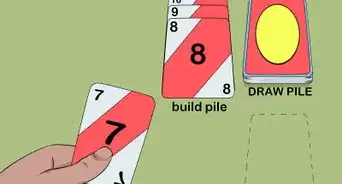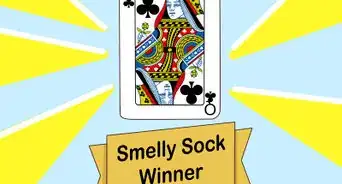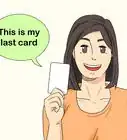This article was co-authored by wikiHow staff writer, Eric McClure. Eric McClure is an editing fellow at wikiHow where he has been editing, researching, and creating content since 2019. A former educator and poet, his work has appeared in Carcinogenic Poetry, Shot Glass Journal, Prairie Margins, and The Rusty Nail. His digital chapbook, The Internet, was also published in TL;DR Magazine. He was the winner of the Paul Carroll award for outstanding achievement in creative writing in 2014, and he was a featured reader at the Poetry Foundation’s Open Door Reading Series in 2015. Eric holds a BA in English from the University of Illinois at Chicago, and an MEd in secondary education from DePaul University.
There are 9 references cited in this article, which can be found at the bottom of the page.
This article has been viewed 44,396 times.
Learn more...
Selling Magic: The Gathering cards can be an overwhelming task, especially if you have a large collection. To make things easier, start by sorting your collection by rarity to find the expensive uncommon, rare, and mythic rare cards. If you want to make the most money, sell your chase cards individually. Chase cards are valuable cards that are highly desired by other players because they’re good cards or they’re old. Your cheaper cards (called bulk), are usually better off being sold in a bundle. You can sell online to a private buyer using Craigslist or eBay, or choose to sell your cards to a game shop online or in your area.
Steps
Sorting Your Collection
-
1Spread your cards out on the table and grab a notebook. You’ll need a lot of space to sort your collection and appraise it, so clear off a large table. Wipe it down with a mild dish soap and water, then dry it with a microfiber cloth to ensure that your cards aren’t damaged by food residue. Take your cards out of their shoeboxes, storage containers, or deck boxes, and spread them out on your table. Grab a notebook and pen to write your cards and their prices down. You’ll also need a computer or phone to look up prices.
- If your collection is really large, like over 5,000 cards, this process may take over 24 hours. It’s important though, since you may have cards worth hundreds of dollars. If you really want to fetch a good price for your cards, you need to know what they’re worth.
-
2Use the symbol on the right side of the card to sort them by rarity. Look right below the art on the card and find the symbol printed on the right side of the card. This is the set symbol, and it indicates when a card was printed and how rare it is. If this symbol is black, your card is a common. Commons tend to be worth less than $0.05 each, and are rarely sold on their own. The cards that may cost money will have silver (uncommon), gold (rare), or orange (mythic rare) symbols. Flip through your cards and put the uncommons, rares, and mythic rares into separate piles.[1]
- If your cards are already sorted by rarity, you can skip this step.
- Uncommons tend to be worth less than rares. Mythic rares tend to be more expensive than rares. It’s a good idea to keep rares and mythic rares in a binder to keep them safe.
- Rarity refers to how likely the card is to be opened in a booster pack. Every booster pack contains 1 land, 10 commons, 3 uncommons, and 1 rare. In roughly 1-in-8 packs, the rare is replaced by a mythic rare. This means that there are more commons than uncommons, and more uncommons than rares. Uncommon and rare cards also tend to be better than commons.
Advertisement -
3Check for a date of 1997 or older before setting common cards aside. If your cards were printed before 1997, the commons may be worth a meaningful amount money. Check the date printed at the bottom of your card to see when it was printed. The date is listed right underneath the artist’s name, which is underneath the text box for the card.[2]
- Older cards have a different border and template than newer cards. You should be able to recognize them instantly based on the typeface, colors, and art style.
Tip: If there isn’t a date printed on the card and it has a black border, it’s an Alpha card! These cards are extremely expensive. Even the common cards from this set are worth thousands of dollars.
-
4Look up the prices of your uncommons, rares, and mythic rares online. Once you have your cards sorted, go online and pull up a card appraisal service or market, like TCGplayer, MTG Price, or Card Mavin. Search each individual card to pull up its price. Type the name of the card into the search bar and pull up the price for your card’s printing. Look at the “average” price to determine your card’s market value.[3]
- There are apps for your phone that use the camera to scan your card and pull up the average price for you. These apps can make pricing your entire collection a breeze. Delver Lens is the most popular version of this app. TCGPlayer, the biggest Magic retailer, has an app that lets you import your cards into their buylist if you want to sell directly to them.
- The prices of cards fluctuate based on the market’s demand for them. Foils are usually worth more than non-foiled cards. Foil cards are the cards with a shiny varnish on top of them.
- Make sure that the set symbols of your card match the image. Some cards have been printed in multiple sets, and older sets are generally worth more than newer printings.
- A card’s “high” price refers to the maximum amount someone has historically paid for the card. The “low” price refers to the least amount of money that someone has ever paid. Unless your card is absolutely pristine or completely worn out, use the “average” price listing.
-
5Set aside cards worth less than $3.00 to make a bulk pile. If a card is worth less than $3.00, it is considered “bulk.” Bulk cards are typically not worth selling on their own, since the shipping price radically impacts the percentage you can make on the card. Set these cards aside to create a pile of bulk cards that you can sell all at once.[4]
- Bulk cards rarely fetch their market value price when you’re selling them. This is because it’s hard to turn a profit on them. Usually, you’ll get anywhere from 50-80% of a card’s market value if it’s bulk.
-
6Put chase cards worth more than $3.00 in a separate pile. “Chase” refers to cards that have a high demand among players. These cards are always worth more than $3.00, and they’re worth selling individually to maximize your profits. Create a separate stack of chase cards to sell them one at a time.[5]
- Some players believe that a card must cost at least $5.00 for it to be considered chase.
- Chase cards often fetch 80-100% of their market value. Your odds for getting 100% of the market value increase if you sell your chase cards to a private buyer.
-
7Remove any cards you’ll use in the future or may go up in price. If you know that you may want to play with a particular card in the future, remove it from the pile. If you think that a card might be worth more in the future, consider holding on to it. MTG Price shows the price trends for cards, which makes it easier to predict if a card will go up in value in the future. Visit MTG Price at http://www.mtgprice.com/.[6]
- Lands are especially good to hold on to. The demand for lands is high because every competitive deck uses the same lands. If you want to play in the future, consider holding on to your rare lands.
- There are people that speculate on Magic cards as an investment. If you want to see if there is a discussion surrounding one of your cards, visit one of the Magic investment communities at https://www.reddit.com/r/mtgfinance/ or https://www.quietspeculation.com/.
-
8Hold on to cards on the Reserved List to make more money in the future. The Reserved List refers to a set of cards that will never be reprinted. Wizards of the Coast, the company that makes Magic, made a legally-binding promise to never reprint these cards, and they tend to be extremely powerful. Historically, these cards have only gone up in value as the limited supply dwindles down. Consider holding on to these cards as an investment for the future.[7]
- You can find the full Reserved List online at https://magic.wizards.com/en/articles/archive/official-reprint-policy-2010-03-10.
- These cards often fetch prices in the thousands of dollars. An Alpha Black Lotus can easily fetch at least $100,000 if it’s in mint condition.
- Get your Reserved List cards graded by a grading company, like Beckett’s, to ensure that your cards hold their value. Graded cards are encased in a protective case and are authenticated to prove they aren’t fake. Graded cards fetch a higher price than ungraded cards when it comes to the Reserved List.
Selling Chase Rares
-
1Sell your individual card on eBay to fetch the best price. Without a doubt, eBay is the best way to earn the most money for chase rares. It’s also the riskiest though, so only sell to reputable buyers. Take some high-quality photos of your card and post an advertisement on eBay. List the card for 100% of its market value. Ship it to the seller and pay for tracking to ensure that the card isn’t lost in transit.[8]
- Fake cards are the major reason that eBay is dangerous when it comes to selling and buying Magic cards. Since many cards are worth hundreds of dollars, there is a serious problem with fake cards on eBay. Even if your card isn’t fake, a buyer may claim that it’s fake. Their claim will be taken seriously, since authenticity is hard to prove and there are so many fake cards floating around the site.
-
2Use Cardsphere to sell chase rares safely for a fair price. Cardsphere is the most popular digital platform for Magic players to buy from private sellers. Visit the site online and set up a free account. Enter the names of the cards that you’re selling in your profile’s collection by clicking the tab in your profile. Cardsphere will automatically set a price for your card based on the average market price. Players will request to buy your cards when they find something in your collection that they want. Ship the card to the buyer once it sells.[9]
- Due to the site’s popularity, the market on this site is quite competitive. This means you may need to lower your price to sell a card, but you’re unlikely to run into scams or back-charges on Cardsphere.
- Cardsphere usually sets the price around 80-95% of the card’s value. You can always reject a price though.
- Cardsphere is safer than eBay because it flags buyers that have attempted to send cards back or claim that a card is fake when it isn’t. It also requires buyers to pay ahead of time, which ensures that you’ll get your money.
- You can also trade for other cards on Cardsphere. Visit Cardsphere at https://www.cardsphere.com/.
-
3Visit online shops to consult their buy lists for a reasonable price. A buylist is a term in card trading games for what a store is willing to purchase your cards for. Larger shops tend to have better buylist prices than smaller shops, and every large seller has a buylist. Visit the major retailers online and search each card’s buylist price. When you find the highest price, put your cards in an envelope and ship them to the address listed on their website. The shop will send you your money or credit it to your banking account.[10]
- To be on the safe side, get tracking for your package and ship your cards in a firm envelope to avoid bending the cards. There isn’t a real chance that you get scammed—these larger online shops are extremely reputable, and most of them will replace your cards if they get lost in transit.
- These buylist prices are usually 60-80% of the market value of a card. The buylist prices shift based on whether your card is in mint condition, good condition, heavily played, or damaged.
- The largest online retailer is TCGPlayer (https://www.tcgplayer.com/). The other major online retailers include Star City Games (http://www.starcitygames.com/), Channel Fireball (https://store.channelfireball.com/landing), Card Kingdom (https://www.cardkingdom.com/), ABUGames (https://abugames.com/), and CoolStuff Inc. (https://www.coolstuffinc.com/).
-
4Take your chase rares to a local shop to sell them quickly. To get rid of all of your chase cards quickly, take them to your local games shop and sell them individually. Your local game shop’s buylist prices will be lower than the major retailers, but you won’t need to invest as much time to research prices. You also won’t need to wait for your cash. Take the cards to a local games shop and tell the person behind the counter that you want to sell some cards. Hand them over and they’ll price them out and give you your cash.[11]
- This is not an efficient way to get the best price for your cards. It’s always a good thing to support local businesses though!
- You can accept or decline a shop’s offer after they’ve priced your cards. You usually can’t barter or negotiate, since buylist prices are often firm.
Selling Your Bulk
-
1Take your bulk rares to a card shop to get the buylist price. Look online to find a gaming or card shop in your area. Take your bulk rares to the shop and tell the person behind the counter that you’re looking to sell some bulk cards. They’ll go through your cards, one by one, and add up what they’re willing to give your for your collection based on their buylist.[12]
- Bulk cards aren’t usually worth shipping anywhere, so it’s easier to take them to a card shop in your area.
- Even if your total value is more than $100.00, it’s not going to fetch that price if it’s 100 cards. Even if you sell it online, you need to take shipping costs into account.
-
2Sell bulk cards that slot into a specific deck to a private buyer. If you have a group of cards that fit together in a certain deck, a player looking to build that deck is going to be interested in acquiring them all at once. Go to a card shop on game night and see if anyone wants to trade or buy your cards. Find a Facebook group for selling Magic cards or visit a community online and post an ad listing the cards you’re selling. This is the best way to get rid of a set of bulk that isn’t worth selling individually.[13]
- This is pretty difficult to do if you don’t know what your cards do. You’re also not going to make a lot more money than using one of the other options. Skip this step if you don’t have an in-depth understanding of the game.
- For example, if you have a 18 bulk rares that fit into a Modern Merfolk deck, group those cards together. Post an advertisement on a Facebook group or online and explain that these cards all fit into the Merfolk deck. A player looking for those cards may want to buy them all at once to cut back on shipping costs.
- Be tactful if you’re offering to sell cards to a private buyer inside of a card shop. Many owners look down on this, although it happens all of the time.
- Online magic communities can be found at https://www.reddit.com/r/mtgtrades/ and https://www.mtgsalvation.com/.
-
3List a collection of bulk rares on Craigslist or eBay. Many people sell bulk online in bundles, marketing them as “100 rare cards” or “1,000 uncommons and rares.” Take the combined price of the cards you want to sell and add $10.00-50.00 based on the number of cards. Count the number of cards and create an ad online at Craigslist or eBay to reach casual players simply looking to build a collection.[14]
- Serious Magic players aren’t interested in your bulk since the cards aren’t usually very good. Competitive players tend to buy single cards that they need on more reputable sites, and they don’t buy big collections like this on Craigslist or eBay. However, listing cards on these 2 sites is a great way to reach casual players that doesn’t mind paying above market value for your cards.
- This will net you a higher profit than selling them at a shop, but it’ll take longer to get your money.
-
4Sell your commons and uncommons online as an “instant collection.” An “instant collection” refers to a pool of cards that aren’t worth much, but may appeal to a younger player that just wants a lot of cards. Most instant collections contain 500-5,000 cards, and they range in price from $20.00-$50.00. Create an advertisement on eBay and Craigslist to sell your collection to a private buyer.[15]
- This is the best way to get rid of a massive collection and make a lot of money, but it’s kind of misleading to the buyer if your cards aren’t worth what you’re selling them for.
- Try to avoid inflating the price too high. If you know the cards are only worth $5.00, don’t list the collection for more than $15.00-20.00.
- It can take a long time for these types of collections to sell since many people just aren’t interested in them.
-
5Take your collection to your local game shop and sell it. Take your shoeboxes, decks, or storage container to your local game shop. Explain that you’re selling a bulk collection. For collections larger than 1,000 cards, the shop will typically look at how many cards you have and make an educated guess about how many there are. Sell them to the shop based on their estimated number and bulk collection price.[16] >
- Remove any card worth more than $0.25 to sell it separately. A shop will purchase entire collections, usually for $2.50-4.00 per 1,000 cards. However, cards worth more than $0.25 are usually listed at $0.10-0.15 or higher. This means that it’s better to sell these cards individually at the shop.
- Even if you have 10,000 cards, you aren’t going to make a lot money on them if they’re only worth $0.01 a piece. The effort involved in selling these cheap cards detracts from their price—even if they’re only worth $0.01. There are also so many of these cheaper cards in print that it’s hard to get rid of them for market value.
Warning: Do not sell an entire collection to a shop without removing the rares and expensive uncommons first. Magic is an expensive hobby, and you may be losing out on thousands of dollars.
Warnings
- Under no condition should you sell Magic cards without looking up what they’re worth. Some cards are worth thousands of dollars, and many of them are worth more than $20.00.⧼thumbs_response⧽
References
- ↑ https://youtu.be/CBq-sXKj2UU?t=200
- ↑ https://youtu.be/CBq-sXKj2UU?t=200
- ↑ https://youtu.be/w4L5ikYFwrY?t=244
- ↑ https://magic.tcgplayer.com/db/article.asp?ID=14231
- ↑ https://magic.tcgplayer.com/db/article.asp?ID=14231
- ↑ https://youtu.be/_o2F5uHFd6Q?t=419
- ↑ https://magic.wizards.com/en/articles/archive/official-reprint-policy-2010-03-10
- ↑ https://youtu.be/uIjIIqMoDEU?t=146
- ↑ https://youtu.be/W0FoZeHg8PI?t=885
- ↑ https://youtu.be/8tSx0SB1IdI?t=164
- ↑ https://youtu.be/8tSx0SB1IdI?t=164
- ↑ https://youtu.be/8tSx0SB1IdI?t=164
- ↑ https://magic.tcgplayer.com/db/article.asp?ID=14231
- ↑ https://magic.tcgplayer.com/db/article.asp?ID=14231
- ↑ https://magic.tcgplayer.com/db/article.asp?ID=14231
- ↑ https://youtu.be/aL-UVXiwx2k?t=190
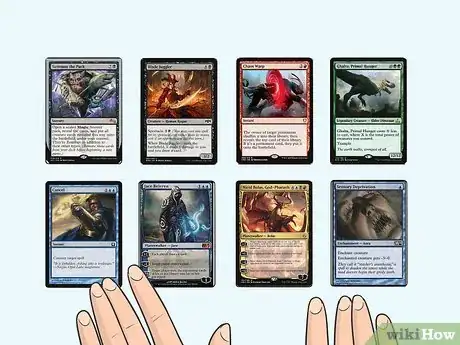
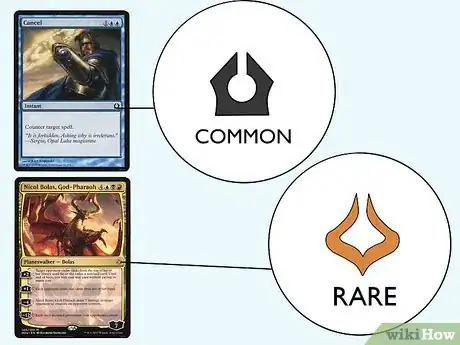
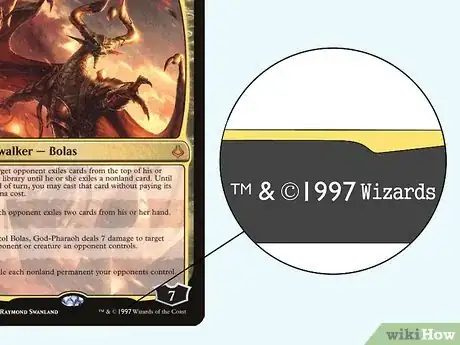
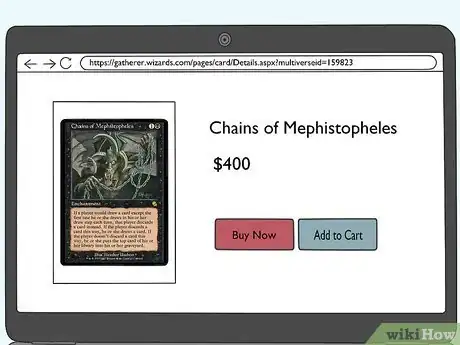

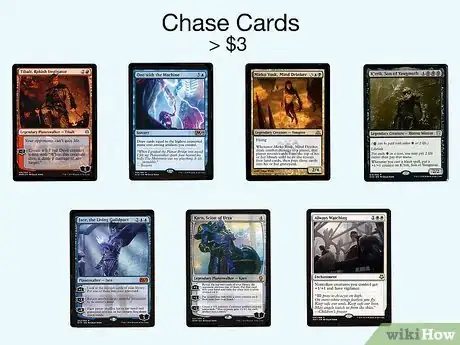



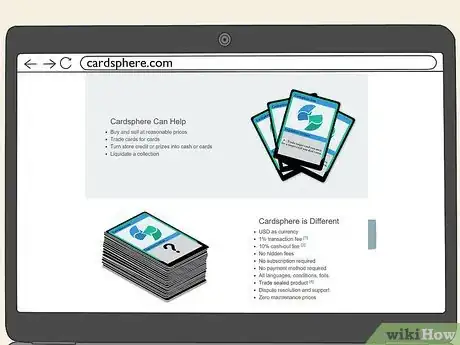
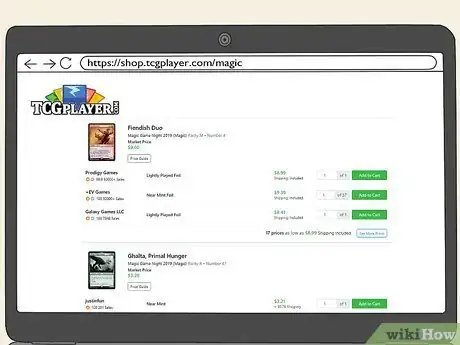




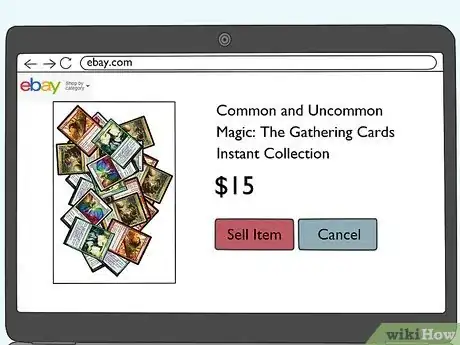



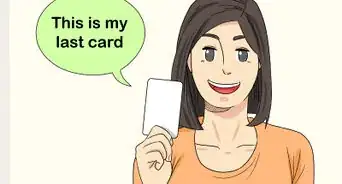
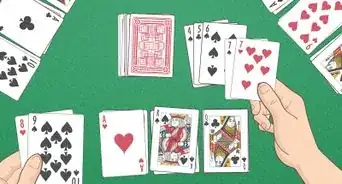
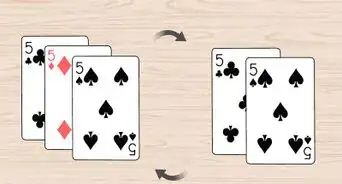
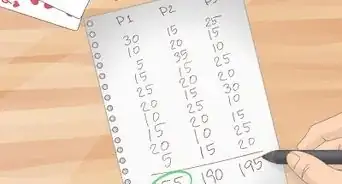

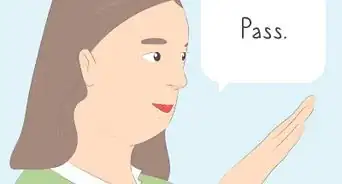
-Step-17.webp)



